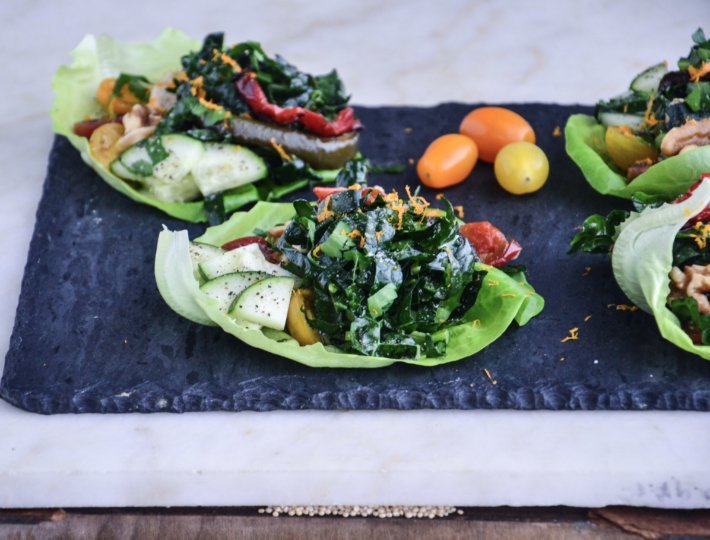“Organic.” “Sustainable.” “Local.” These are terms that often make us feel comforted and provide a haloed seal of approval for the foods we eat, even when those foods include cupcakes and lollypops! Yet a word like “processed,” creates a negative impression even if we’re referring to frozen broccoli.
“Processed” has become a buzzword that food activists love to hate, but most don’t even realize that they eat processed food at just about every meal. According to the International Food Information Council Foundation, a processed food is “any deliberate change in a food that occurs before it’s available for us to eat.” So if you enjoyed a slice of organic whole grain local bread this morning with your breakfast, then you consumed a processed food. If unprocessed, instead of bread, you would have been chewing on a stalk of wheat.
Related: Is Protein Really Better Than Carbohydrates?
Processing, therefore, may create changes impacting and sometimes even enhancing the texture, shape, taste, and temperature of a food. In fact, certain processed foods are healthier than foods found in their natural state. As an example, plain Greek yogurt with added cultures, retains the protein and calcium naturally found in dairy products, and it also includes added good bacteria to help boost your gut function and immune systems. And when tomatoes are canned (cooked) versus fresh, they contain a greater amount of lycopene, a powerful antioxidant that reduces inflammation.
But processed yogurt and tomatoes are not the foods that are chipping away at your state of health. According to a new study published in BMJ Open, it’s the “ultraprocessed” foods in our diets that are the real culprits. Aside from those items that carry too much sugar, salt, and unhealthy fats, here, ultraprocessed is defined as, “formulations of several ingredients” including additives and flavors, colors, sweeteners, and emulsifiers. Although the researchers’ “ultraprocessed” classification includes a list of foods like breads, soft drinks, fruit drinks, milk-based drinks, cakes, cookies, pies, salty snacks, and frozen foods, perhaps it’s best to take a closer look at some of these broad categories.
Though there’s a tendency to make blanket statements about food, certain groups, like frozen foods, are quite extensive, containing a wide range of items. Studies have shown that fruits and vegetables, harvested at the peak of ripeness and then frozen could provide a richer nutrient profile than their fresh counterparts. Fresh produce may need to travel across the country on hot trucks for miles, exposed to environmental elements before they get stacked on supermarket shelves. The frozen food aisle, therefore, is extensive and there is a vast difference between frozen produce as compared with mac and cheese or certain frozen dinners.
Related: Why Does Nutrition Advice Seem So Contradictory?
In other words, its not the act of ‘processing’ that creates foods that contribute to our growing levels of obesity, Type 2 diabetes, and heart disease. It’s what’s added to those foods that could ignite harmful physical reactions and let’s not ignore that it’s also the frequency with which we eat these foods that matters. Occasional cookies or a salty snack is not going to send you to the hospital, but a lifelong regular diet of foods that are laden with sugar, salt, and unhealthy fats can sooner boost your medical bills than your energy levels.
Perhaps the most alarming statistic that arose from this new study was that ultraprocessed foods make up more than half of all calories in the average American diet and account for nearly 90 percent of all added sugars. So the more highly processed foods you eat, the more likely your sugar intake will exceed recommended levels. As a reminder, within our new Dietary Guidelines for Americans, it is suggested that we derive no more than 10% of our daily calories from sugar. So what does that mean? Here’s the quick math: The average caloric recommendation equals 2,000 calories (even though that’s more than many of us need). So 10 percent of 2,000 calories equals 200 calories. Then 200 calories of sugar equal 50 grams (g) of sugar. One can of cola soda has 35 g of sugar.
A sugary soda may be an obvious source of the sweet stuff, but sugar is the master of disguise and often lurks on the ingredient list appearing as corn sweetener, organic cane juice, rice syrup, raw sugar, and words ending in the letters “ose,” just to name a few. Check some of your favorite condiments, sauces, and crackers to see how many types of sugar they contain. You might be surprised how many ultraprocessed foods you’re consuming.
So the takeaway message here is that if you’re a big fan of ultra processed foods high in sugar, sodium, and unhealthy fats, it’s time to join a new fan club. There’s nothing wrong with indulging in decadent (even if unhealthy), foods now and then, but try to make those choices the exception rather than the rule. But be careful not to conjoin minimally processed foods like canned beans, whole grain pasta, and almond butter with those foods that look nothing like they looked when they grew on a farm.
You can save time, money and calories by doing a little planning ahead, taking the time to read food labels and trying to do some simple cooking at home. Bring friends and family on board to help you make these efforts valuable and rewarding.
Processed food has helped us safely stay nourished for centuries. And if you want to protect your body and the planet, you need to choose these foods wisely.









Comments (0)